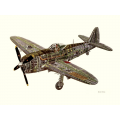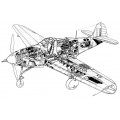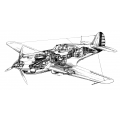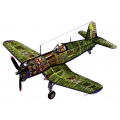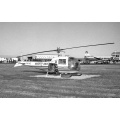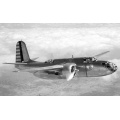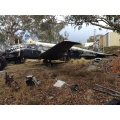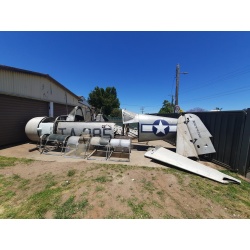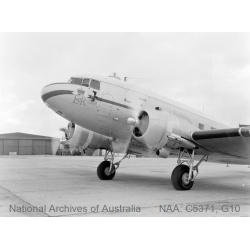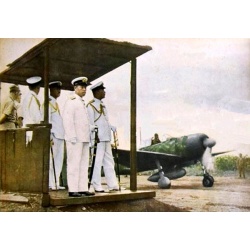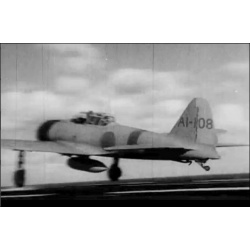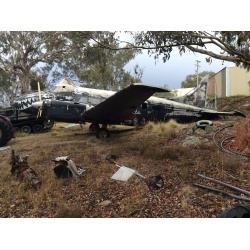Aircraft Projects
Vultee BT-13 WW2 project (SOLD)
1942 Vultee BT-13 two seat US army air forces & US navy trainer project.

This aircraft contains parts from several BT-13's however the main identity belongs to a US Navy SNV-2 or BT-13B trainer that flew during and after the second world war.
This project is 90% complete minus engine and propeller, it comes with many spares such as duplicate rudder, flaps, elevators, canopies etc, it is in need of a full restoration.
This aircraft could be cosmetically restored as a static museum piece in a relatively short period or be completely overhauled for flight.

The main inventory is shown in These photos
including:
main fuselage frame
center wing section
outer wings
rear fuselage
vertical fin
horizontal stabilisers
flaps
ailerons
rudders
elevators
engine mount
cowling
multiple sets of landing gear
multiple sets of canopies
etc etc..
With an asking price of $11,000 USD it is the lowest priced WW2 warbird project on the market.
This aircraft is located on the east coast on Australia and can be shipped anywhere in the world in a 40' container.

This aircraft contains parts from several BT-13's however the main identity belongs to a US Navy SNV-2 or BT-13B trainer that flew during and after the second world war.
This project is 90% complete minus engine and propeller, it comes with many spares such as duplicate rudder, flaps, elevators, canopies etc, it is in need of a full restoration.
This aircraft could be cosmetically restored as a static museum piece in a relatively short period or be completely overhauled for flight.

The main inventory is shown in These photos
including:
main fuselage frame
center wing section
outer wings
rear fuselage
vertical fin
horizontal stabilisers
flaps
ailerons
rudders
elevators
engine mount
cowling
multiple sets of landing gear
multiple sets of canopies
etc etc..
With an asking price of $11,000 USD it is the lowest priced WW2 warbird project on the market.
This aircraft is located on the east coast on Australia and can be shipped anywhere in the world in a 40' container.
General characteristics
- Crew: 2
- Length: 28 ft 10 in (8.79 m)
- Wingspan: 42 ft 0 in (12.80 m)
- Height: 11 ft 6 in (3.51 m)
- Wing area: 239 sq ft (22.2 m2)
- Empty weight: 3,375 lb (1,531 kg)
- Gross weight: 4,496 lb (2,039 kg)
- Powerplant: 1 × Pratt & Whitney R-985-AN-1 nine-cylinder air-cooled radial engine, 450 hp (340 kW)
- Propellers: 2-bladed Hamilton-Standard 2-position
Performance
- Maximum speed: 180 mph (290 km/h, 160 kn)
- Range: 725 mi (1,167 km, 630 nmi)
- Service ceiling: 21,650 ft (6,600 m)
- Time to altitude: 9.2 minutes to 10,000 ft (3,000 m)
Queen Elizabeth II's C-47B Dakota cockpit (sold)
This is the nose cockpit section from a C-47B Dakota that was used by the queen on her 1954 Royal tour of Australia.

(above: Queen Elizabeth and the Duke of Edinburgh exiting the aircraft)
The aircraft was delivered in 1945 to 36th squadron of the RAAF as A65-123 and was used to transport Queen Elizabeth and the Duke of Edinburgh around the country in 1954.


During this time it was briefly flown by Prince Philip, Duke of Edinburgh (Video of this at top).

(above: during the tour)(below: later RAAF service)

It continued in RAAF service until 1968 when it was transferred to the Royal Australian navy and designated N2-123 coded NW for its home base at HMAS Albatros.

(above: with the navy at Nowra NSW)
After the Navy retired it's Dakotas this aircraft was broken up with only the cockpit being saved. Since then this section has been completely restored to its original condition and has been preserved in storage for over thirty years.
The section is entirely restored and complete down to the pilots head sets.


The section is mounted on a wheeled stand and can be shipped world wide safely via sea freight.


This section is a historic museum piece in excellent condition and ready to display.
The section should fit in a sealed 20ft HC container for shipping.
Asking US $42,000. (GST applicable if sold within Australia)
This is the nose cockpit section from a C-47B Dakota that was used by the queen on her 1954 Royal tour of Australia.

(above: Queen Elizabeth and the Duke of Edinburgh exiting the aircraft)
The aircraft was delivered in 1945 to 36th squadron of the RAAF as A65-123 and was used to transport Queen Elizabeth and the Duke of Edinburgh around the country in 1954.


During this time it was briefly flown by Prince Philip, Duke of Edinburgh (Video of this at top).

(above: during the tour)(below: later RAAF service)

It continued in RAAF service until 1968 when it was transferred to the Royal Australian navy and designated N2-123 coded NW for its home base at HMAS Albatros.

(above: with the navy at Nowra NSW)
After the Navy retired it's Dakotas this aircraft was broken up with only the cockpit being saved. Since then this section has been completely restored to its original condition and has been preserved in storage for over thirty years.
The section is entirely restored and complete down to the pilots head sets.


The section is mounted on a wheeled stand and can be shipped world wide safely via sea freight.


This section is a historic museum piece in excellent condition and ready to display.
The section should fit in a sealed 20ft HC container for shipping.
Asking US $42,000. (GST applicable if sold within Australia)
1954 queens royal tour aircraft
(SOLD) IJN Mitsubishi A6M2 Type 0 (A6m Zero)
This is an very rare, combat used Mitsubishi A6M2 type 0 'Zero' fighter aircraft that was flown by the Imperial Japanese Navy during WW2 in battle against allied forces.
Believed to have belonged to the fighter air wing of the Japanese aircraft carrier Akagi, it participated in the early battles of the second world war in the Pacific including the bombing of Darwin, Australia.

(IJN A6M fighters taking off for battle during Operation I-Go)
The complete history of the aircraft is not known but what is known is that it was landed in the shortland islands for Operation I-Go, a Massive Japanese operation aimed at shoring up a line of defense against allied attacks in the south east pacific after recent defeats in the Battle of Guadalcanal & New Guinea.
However on the 18th of October 1943 the island where this Zero was based was attacked by the US Navy with 24 SBD dive bombers, 12 TBF Avenger bombers and 56 escorting fighters, followed up by 30 B-24 Heavy bombers and 17 P-38 lightnings that dropped 202 1000LB bombs on the runway and dispersal areas.

Although the aircraft did not take direct hit during the attack it was damaged by shrapnel and subsequently used for parts to keep other aircraft flying.
The remains of this aircraft were discovered hidden deep in the overgrown jungle and great effort has been put into recovering it from its isolated resting place for preservation and restoration.
The cockpit still contains many original items as it has remained completely untouched since 1945, however it is missing its seat, control stick and instrument panel as they were likely taken as souvenirs by US Marines after the Japanese surrender.

The remains are in remarkably sound condition and consist of the cockpit section complete with throttle, rudder pedals etc from the firewall and up to the rear bulkhead (which has been separated from the rear of the section) and wing sections with many places still retaining the unique green Japanese primer and stenciling.


This is possibly the last opportunity to own and restore a genuine Imperial Japanese Navy fighter aircraft from the second world war.



$65,000
We can ship this aircraft project world wide via sea freight, serious parties should contact us for details.
Believed to have belonged to the fighter air wing of the Japanese aircraft carrier Akagi, it participated in the early battles of the second world war in the Pacific including the bombing of Darwin, Australia.

(IJN A6M fighters taking off for battle during Operation I-Go)
The complete history of the aircraft is not known but what is known is that it was landed in the shortland islands for Operation I-Go, a Massive Japanese operation aimed at shoring up a line of defense against allied attacks in the south east pacific after recent defeats in the Battle of Guadalcanal & New Guinea.
However on the 18th of October 1943 the island where this Zero was based was attacked by the US Navy with 24 SBD dive bombers, 12 TBF Avenger bombers and 56 escorting fighters, followed up by 30 B-24 Heavy bombers and 17 P-38 lightnings that dropped 202 1000LB bombs on the runway and dispersal areas.

Although the aircraft did not take direct hit during the attack it was damaged by shrapnel and subsequently used for parts to keep other aircraft flying.
The remains of this aircraft were discovered hidden deep in the overgrown jungle and great effort has been put into recovering it from its isolated resting place for preservation and restoration.
The cockpit still contains many original items as it has remained completely untouched since 1945, however it is missing its seat, control stick and instrument panel as they were likely taken as souvenirs by US Marines after the Japanese surrender.

The remains are in remarkably sound condition and consist of the cockpit section complete with throttle, rudder pedals etc from the firewall and up to the rear bulkhead (which has been separated from the rear of the section) and wing sections with many places still retaining the unique green Japanese primer and stenciling.


This is possibly the last opportunity to own and restore a genuine Imperial Japanese Navy fighter aircraft from the second world war.



$65,000
We can ship this aircraft project world wide via sea freight, serious parties should contact us for details.
Japanese A6M Zero Battle veteran (SOLD)
This is an extremely rare, combat used Mitsubishi A6M2 type 0 model 21 fighter aircraft, tail code AI-XXX, flown by the Imperial Japanese Navy during WW2.

(A6M launching December 7 1941 for the attack on Pearl harbor)
This very aircraft was on the front line at the outbreak of WW2, belonging to the fighter air wing of the Japanese aircraft carrier Akagi, it participated in the early battles of the second world war in the Pacific.

(A6M fighters stationed in Rabaul in April 1943 for operation I-Go)
The Akagi participated in the bombing of Pearl harbor on December 7th 1941 and later in January 1942 it was involved in attacks on Rabaul and in the bombing of Darwin.
The Akagi then participated in the invasion of Rabaul where it unloaded aircraft for the land based defence of the now captured Rabaul and Solomons chain of islands, however the Akagi was later lost during the Battle of Midway in June 1942.
This aircraft was then used in operation I-Go in April 1943, a massive Japanese offensive to destroy Australian, New Zealand and US forces in the Solomon islands area.
Believing this operation was successful, Admiral Yamamoto was flying to Rabaul to congratulate his forces when he was ambushed by P-38 lightning fighters, shot down and killed.
Operation I-Go was evidently not a success and soon after allied forces launched a massive bombing campaign against the amassed Japanese forces in the area.
On the 18th of October the airfield was attacked by the US Navy with 24 SBD dive bombers, 12 TBF Avenger bombers and 56 escorting fighters, followed up by 30 B-24 Heavy bombers and 17 P-38 lightnings that dropped 202 1000LB bombs on the runway and dispersal areas.
It was during these raids that this aircraft was caught on the ground and damaged.


This aircraft is a good basis for a restoration project, either as a static museum piece or as a flying aircraft. the cockpit still contains most parts including the throttle, rudder bar & pedals, panel mounts etc, the main items missing are the pilots seat and control stick.
With other ongoing A6M restorations at this time there is plenty of knowledge and support out there to rebuild this piece of history to its former glory.
$SOLD
Photos and information will be updated soon.
Serious parties should contact us for further information.

(A6M launching December 7 1941 for the attack on Pearl harbor)
This very aircraft was on the front line at the outbreak of WW2, belonging to the fighter air wing of the Japanese aircraft carrier Akagi, it participated in the early battles of the second world war in the Pacific.

(A6M fighters stationed in Rabaul in April 1943 for operation I-Go)
The Akagi participated in the bombing of Pearl harbor on December 7th 1941 and later in January 1942 it was involved in attacks on Rabaul and in the bombing of Darwin.
The Akagi then participated in the invasion of Rabaul where it unloaded aircraft for the land based defence of the now captured Rabaul and Solomons chain of islands, however the Akagi was later lost during the Battle of Midway in June 1942.
This aircraft was then used in operation I-Go in April 1943, a massive Japanese offensive to destroy Australian, New Zealand and US forces in the Solomon islands area.
Believing this operation was successful, Admiral Yamamoto was flying to Rabaul to congratulate his forces when he was ambushed by P-38 lightning fighters, shot down and killed.
Operation I-Go was evidently not a success and soon after allied forces launched a massive bombing campaign against the amassed Japanese forces in the area.
On the 18th of October the airfield was attacked by the US Navy with 24 SBD dive bombers, 12 TBF Avenger bombers and 56 escorting fighters, followed up by 30 B-24 Heavy bombers and 17 P-38 lightnings that dropped 202 1000LB bombs on the runway and dispersal areas.
It was during these raids that this aircraft was caught on the ground and damaged.


This aircraft is a good basis for a restoration project, either as a static museum piece or as a flying aircraft. the cockpit still contains most parts including the throttle, rudder bar & pedals, panel mounts etc, the main items missing are the pilots seat and control stick.
With other ongoing A6M restorations at this time there is plenty of knowledge and support out there to rebuild this piece of history to its former glory.
$SOLD
Photos and information will be updated soon.
Serious parties should contact us for further information.
extremely rare warbird project
DeHavilland Dove aircraft
This aircraft was the first Dove/Devon used by the Royal New Zealand Air Force.
History:
Arrived in early 1948 and assembled by De Havilland at Rongotai.
Entered the New Zealand Civil Aircraft Register as ZK-AQV.
The C of A was issued on 09 April 1948 and was cancelled on 27 November of that year.
BOC with the RNZAF on 20 April 1948 as a VIP aircraft with the General Purpose Flight based at Ohakea.
To 42 Squadron Ohakea as NZ1801.
Into storage at Woodbourne in June 1963 and advertised for sale by GSB tender 24 April 1970.
Total airframe hours were given as 4003:30.
Sold in April 1970 to Australian Helicopters Ltd, Parafield, SA and registered as VH-MGT 01 June 1971.
To Airfast Helicopters, Mascot, NSW 20 November 1974.
To Armor Coatings Ltd, Park, SA 18 April 1975.
To M. Rainsford, South Perth, WA 22 April 1976.
Removed from register 10 September 1976 as withdrawn from use.
The aircraft currently has no engines and uses dummy propellers, the nose gear has been removed to make it look like a tail dragger, the interior is fairly bare also.
This is a great display piece with a good history, located just west of Sydney NSW, Australia.
History:
Arrived in early 1948 and assembled by De Havilland at Rongotai.
Entered the New Zealand Civil Aircraft Register as ZK-AQV.
The C of A was issued on 09 April 1948 and was cancelled on 27 November of that year.
BOC with the RNZAF on 20 April 1948 as a VIP aircraft with the General Purpose Flight based at Ohakea.
To 42 Squadron Ohakea as NZ1801.
Into storage at Woodbourne in June 1963 and advertised for sale by GSB tender 24 April 1970.
Total airframe hours were given as 4003:30.
Sold in April 1970 to Australian Helicopters Ltd, Parafield, SA and registered as VH-MGT 01 June 1971.
To Airfast Helicopters, Mascot, NSW 20 November 1974.
To Armor Coatings Ltd, Park, SA 18 April 1975.
To M. Rainsford, South Perth, WA 22 April 1976.
Removed from register 10 September 1976 as withdrawn from use.
The aircraft currently has no engines and uses dummy propellers, the nose gear has been removed to make it look like a tail dragger, the interior is fairly bare also.
This is a great display piece with a good history, located just west of Sydney NSW, Australia.
- 1

